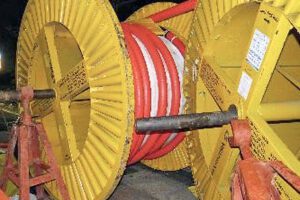PART TWO
In the last article, we looked at the difference between OPEX (operating expenditure) and CAPEX (capital expenditure.) The importance of CAPEX planning to the business was discussed and we started considering how the process is applied by considering a critical safety improvement project being undertaken by a major producer.
The initial phase, of our six-phase lifecycle, was called the Identify Phase. This is where the idea is communicated, the need for action is assessed and if valuable to the company, the decision is made to proceed to the next phase of consideration. This next phase is called the Assess Phase. The project in consideration is the current siting of a plant central control room. The central control room was found to be within range of hazards in the event of several possible process failures. The consequence of some of these events included likely fatalities.
The Assess Phase of capital planning
The Assess Phase defines the problem in more detail and clearly sets out the measurement of success for the solution. The questions addressed in this phase include:
- What is the specific problem to be resolved and why is it a problem?
- What is the difference between the current state and the desired future state?
- What would be the consequence if we do nothing?
- What options do we have? These may include:
- Engineering,
- A change in controls and procedures, or
- A change in the behaviour of people.
- What will the solution achieve?
- How will we measure success?
- How much will it cost and how long will it take?
- Who, and what, are affected?
These questions and more, are addressed in one or more feasibility studies undertaken in this phase. These studies are a combination of technical and financial considerations that allow the company to fully appreciate the problem being addressed and the possible solutions that may be chosen to resolve that problem. The reason these studies go into such depth is because of the cost and disruption caused to the business, by not considering the whole impact of a change to existing conditions, may be unacceptable.
This is where the old saying “…an ounce of prevention is worth more than a ton of cure…” really comes into use!
In our real example, the following possible options were considered in the initial feasibility study:
- Strengthen the buildings to withstand the impact of a process failure;
- Relocate the control room to another existing building in the plant;
- Relocate to a new building in the plant;
- Do nothing.
Consider the relative benefits, weaknesses, costs and ability to satisfactorily solve the safety problems
Each of the possible options was examined in detail to assess their relative benefits, weaknesses, costs and ability to satisfactorily solve the safety problems with the current situation. The feasibility study rated each possible outcome and identified a preferred solution from the options. The preferred solution was a new control room building within the plant. This solution was recommended to the company to be assessed in greater detail in a subsequent study, as being both effective in the result and practical in implementation. Clearly, the ‘do nothing’ options were unacceptable because the risk of fatalities in a process failure remained.
What we can clearly see in this phase, is the extent of work and thought that goes into CAPEX planning. The main reason driving this detailed planning process is that capital expenditure, from the company’s view, is spending money now for a return some time in the future. There is a risk that this return might not be as planned.
To reduce the risk of poor outcome, more planning upfront is needed. In the next post, we’ll look at the next phase of the process, the Select Phase.
Read Part One of this article Here / Read Part Three of this article Here / Read Part Four of this article Here
Our Guest author is Peter Crane from SER Solutions. SER Solutions is an independent strategy and operations management consultant, principally, to the energy and resources sectors. The Company provides clients with practical guidance and economic solutions to critical infrastructure assessment, planning and delivery. You can contact Peter hereby email or Phone















Add Comment